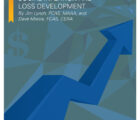Beginning in 2018, I began to work full-time as the CAS research actuary. When I started, the CAS was at various stages of work on five different research priorities: 1. predictive modeling, 2. reserving, 3. cyberrisk, 4. correlation and 5. modeling in general. These had been developed primarily by CAS Staff Actuary Rick Gorvett and then-Vice President-Research & Development Dave Cummings. (Avraham Adler is the current VP-R&D.)
In February of this year, we released a request for proposals (RFP) for work on predictive modeling in ratemaking. A number of fine proposals came in, a researcher has been selected and work is now underway. The project will use a sample of actual insurance data that has been made available to the CAS for research purposes. We are continuing to approach insurance companies and other sources to partner with the CAS to build its supply of data. As a researcher and educator myself, I can tell you that this will be a great boon to the profession.
We have issued two other RFPs related to reserving. The first is seeking work on the use of machine-learning techniques in reserving. The second is more narrowly focused on the use of compartmental models and draws on the innovative work of Jake Morris and his paper, “Hierarchical Compartmental Models for Loss Reserving,” which is published in the Spring 2016 E-Forum.
In July 2018, we issued yet another RFP for work that would explore considerations in picking an exposure base for cyberrisk. We were very deliberate about the word “risk” in connection with “cyber.” This area of insurance can refer to a panoply of risks, possibly inclusive of first-party damages. The technology and risk management approaches continue to advance.
By the time you read this, we should have issued another RFP that will look to produce a user’s guide to economic scenario generators (ESGs), which focuses on their use in property-casualty insurance. For quite a few years, life insurers have been using ESGs as a key input to asset-liability management. And, of course, your company’s finance department is probably using an ESG as a critical tool in capital modeling for their investment portfolio. However, the role of inflation on loss reserves and other applications is less settled.
As for modeling in general, it may be number five on the list, but it is just as important as the other priorities. I am a big fan of looking deeper into topics like correspondence analysis, categorical data, the skewed normal distribution, parametric techniques beyond GLMs and — oh boy! — Bayesian applications using tools like Stan software.
Of course, CAS research is more than just RFPs. The Reserves Committee sponsored a call paper program for 2018, the papers of which will be appearing in an upcoming E-Forum, and is gearing up for another for 2019. The Reinsurance Committee is also sponsoring a call paper program for 2019. The Climate Change Committee continues to update and promote the Actuaries Climate Index. (See Brian Brown’s President’s Message for more on that.) Working parties and task forces — including ones on machine learning, long-term pricing, automated vehicles and predictive analytics in capital modeling — continue to provide insights and tools for CAS members.
I can’t leave this space without a few words regarding the Communities of Interest. This is an initiative that we are continuing to push for everyone in and around the CAS as an adjunct to the activity of formal committees and working parties. They are a great way to engage with actuaries who share common practice interests, from open-source software development to Markov chain Monte Carlo analysis to health care. Are you participating in a community of interest? You should!
In closing, I’d like to make one thing clear: EVERYONE is welcome and encouraged to contribute to research. Even if you do not have the capacity or technical know-how, the CAS has resources to support you. If you have an idea for something that we should be working on, let’s talk! We are all in this together — and together we have tremendous potential to make lasting contributions to the insurance industry and the public that we serve.
Brian Fannin can be reached at bfannin@casact.org.











